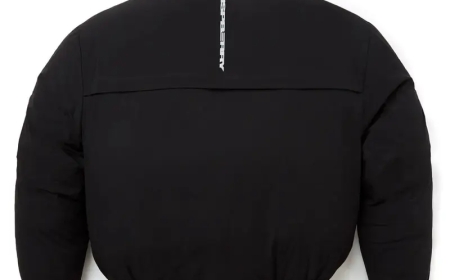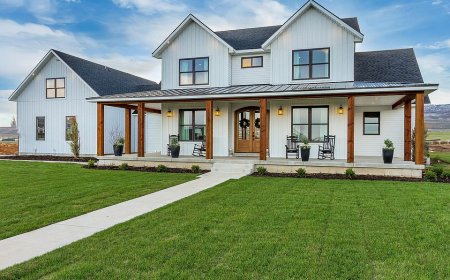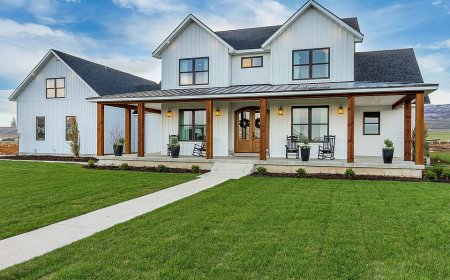The Ultimate Guide to Interior Doors and Prehung Interior Doors
DoorCart is a modern, innovative brand offering stylish and functional door-mounted carts, designed to maximize space and convenience in your home. Perfect for organizing essentials, DoorCart combines smart design with practicality, making everyday life easier and more efficient.
When it comes to home design and functionality, interior doors play a crucial role. They provide privacy, enhance aesthetics, and contribute to the overall flow of your living space. Among the various types of interior doors available,prehung interior doorshave gained popularity due to their ease of installation and professional finish.
In this comprehensive guide, well explore everything you need to know aboutinterior doorsandprehung interior doors, including their types, materials, installation processes, and key considerations when choosing the right doors for your home.
1. Understanding Interior Doors
What Are Interior Doors?
Interior doors are doors installed inside a home to separate rooms, such as bedrooms, bathrooms, closets, and living areas. Unlike exterior doors, they dont need to provide insulation or extreme durability against weather conditions. Instead, their primary functions include:
-
Privacy Keeping certain areas (like bathrooms and bedrooms) secluded.
-
Noise Reduction Minimizing sound transfer between rooms.
-
Aesthetic Appeal Enhancing the interior design with stylish finishes.
-
Space Division Defining different functional areas within a home.
Types of Interior Doors
There are several types of interior doors, each serving different purposes:
A. Panel Doors
Panel doors feature a classic design with raised or recessed panels. They come in various configurations, such as:
-
Single-panel A simple, elegant look.
-
Two-panel Common in traditional homes.
-
Four-panel or six-panel More detailed and decorative.
B. Flush Doors
Flush doors have a smooth, flat surface and are often made from solid wood or engineered wood with a veneer finish. They are minimalist and work well in modern homes.
C. French Doors
French doors consist of glass panels, allowing natural light to flow between rooms. They are ideal for dining rooms, studies, or as elegant room dividers.
D. Barn Doors
Barn doors slide on a track instead of swinging open. They are space-saving and add a rustic or industrial charm to interiors.
E. Pocket Doors
Pocket doors slide into a wall cavity, making them perfect for tight spaces where a swinging door isnt practical.
F. Bifold Doors
Common for closets, bifold doors fold in half when opened, providing easy access without requiring much clearance.
2. What Are Prehung Interior Doors?
Definition of Prehung Doors
Aprehung interior doorcomes already mounted into a frame (jamb) with hinges attached. Unlike aslab door(just the door itself), a prehung door includes:
-
The door slab
-
Hinges (usually three)
-
A door jamb (frame)
-
A pre-cut strike plate for the latch
-
Often includes a doorstop
Advantages of Prehung Interior Doors
-
Easier Installation Since the door is already hinged and aligned in the frame, installation is quicker and requires less precision.
-
Better Fit The frame is pre-assembled, reducing gaps and misalignment issues.
-
Professional Finish Ensures smooth operation and a clean look.
-
Time-Saving Ideal for new construction or renovations where multiple doors are needed.
Disadvantages of Prehung Doors
-
Higher Cost More expensive than slab doors due to the included frame.
-
Bulkier to Transport The attached frame makes them larger and heavier.
-
Limited Customization Sizes are standardized, so adjustments may be needed for non-standard openings.
3. Materials Used for Interior Doors
The material of an interior door affects its durability, soundproofing, and appearance. Common materials include:
A. Solid Wood
-
Pros:Durable, elegant, and can be refinished.
-
Cons:Expensive and prone to warping in humid conditions.
B. Engineered Wood (MDF, Particleboard)
-
Pros:Affordable, stable, and resistant to warping.
-
Cons:Less durable than solid wood and cant be refinished easily.
C. Hollow Core
-
Pros:Lightweight and budget-friendly.
-
Cons:Poor sound insulation and less durable.
D. Glass (for French or Modern Doors)
-
Pros:Adds light and openness.
-
Cons:Less privacy and requires frequent cleaning.
E. Metal (for Contemporary Designs)
-
Pros:Sleek, modern, and durable.
-
Cons:Expensive and can feel cold.
4. How to Choose the Right Interior Door
When selecting an interior door, consider:
A. Functionality
-
Bedrooms & Bathrooms Solid or solid-core doors for privacy and noise reduction.
-
Closets & Laundry Rooms Lightweight hollow-core or bifold doors.
-
Living & Dining Areas French or glass doors for an open feel.
B. Style & Design
-
Match the door style to your homes aesthetic (modern, traditional, rustic).
-
Consider panel designs, finishes, and hardware.
C. Budget
-
Solid wood doors are premium, while hollow-core doors are budget-friendly.
-
Prehung doors cost more but save on installation labor.
D. Measurements
-
Standard interior door sizes:
-
Width:24, 28, 30, 32, 36
-
Height:80 (standard), 96 (for taller ceilings)
-
Thickness:1? (most common), 1 (for better soundproofing)
-
5. Installing Prehung Interior Doors
Step-by-Step Installation Guide
-
Remove the Old Door & Frame(if replacing).
-
Check the Rough Opening Ensure it matches the prehung door size.
-
Insert the Prehung Door Place it into the opening and shim for leveling.
-
Secure the Frame Nail or screw the jamb into the studs.
-
Check Alignment Ensure the door swings smoothly without sticking.
-
Install Trim & Casing Cover gaps with molding for a finished look.
DIY vs. Professional Installation
-
DIY:Possible for experienced homeowners, but requires precision.
-
Professional:Recommended for perfect alignment and efficiency.
6. Maintenance & Care for Interior Doors
-
Clean Regularly Wipe with a damp cloth; avoid harsh chemicals.
-
Lubricate Hinges Prevent squeaking with silicone spray or WD-40.
-
Repaint or Refinish Refresh wooden doors as needed.
-
Check for Warping Especially in humid areas.
7. Conclusion
Interior doors are more than just functional elementsthey contribute to your homes style, comfort, and efficiency.Prehung interior doorsoffer a hassle-free installation solution, making them ideal for renovations and new constructions.
When choosing between slab doors and prehung doors, consider your budget, skill level, and project requirements. Whether you prefer classic panel doors, sleek flush doors, or space-saving barn doors, the right interior door can elevate your homes design while serving its practical purpose.
By understanding materials, styles, and installation methods, you can make an informed decision that enhances both the beauty and functionality of your living space.
Final Thoughts
Upgrading your interior doors is a simple yet impactful way to refresh your home. Whether you opt for traditional solid wood or modern prehung doors, the right choice will improve privacy, aesthetics, and daily convenience.
Ready to upgrade your interior doors?Explore different styles and materials to find the perfect fit for your home






































